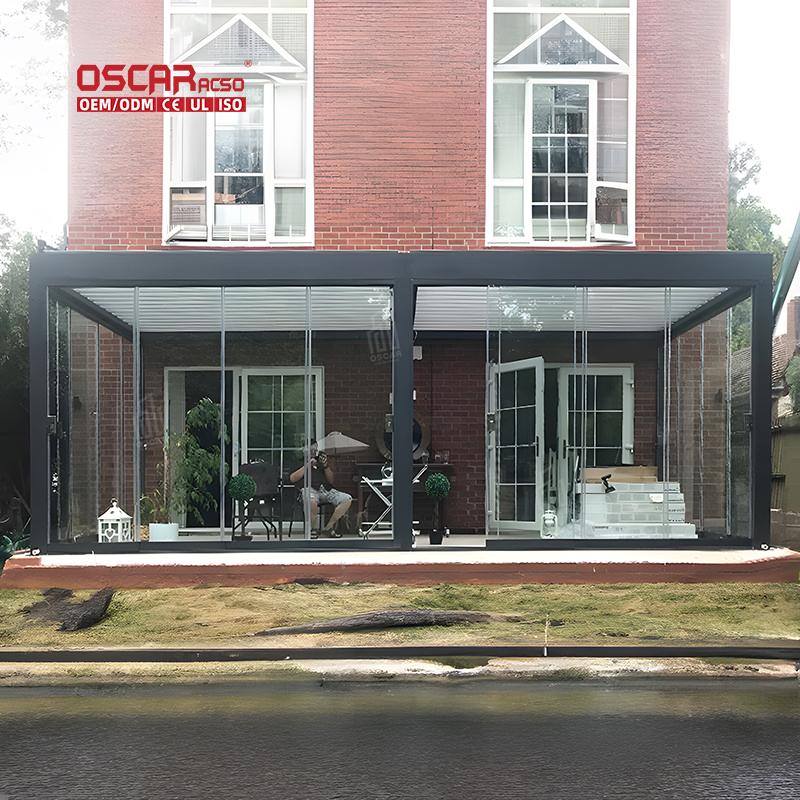Motorized Electric Louver Pergola, Revolutionize Your Patio with Intelligent Climate Control
IntroductionImagine lounging in your backyard, where with a simple tap on your smartphone, the louvers above adjust ...
Introduction
.jpg)
Imagine lounging in your backyard, where with a simple tap on your smartphone, the louvers above adjust seamlessly to block the harsh sun or invite a gentle breeze. A motorized electric louver pergola isn’t just a structure—it’s a dynamic living space that responds to your needs in real-time. But what sets it apart from traditional pergolas? Let’s explore this innovation that’s redefining outdoor comfort! 🌿
What Exactly is a Motorized Electric Louver Pergola?
At its core, this system features adjustable aluminum or wood louvers connected to a quiet motor, allowing you to control shade, light, and ventilation with a remote, app, or even voice commands. Why is this a game-changer? Unlike fixed-roof pergolas, it offers customizable coverage—from full sun to complete enclosure during rain. For instance, some models can rotate louvers up to 180 degrees, directing sunlight or shielding against downpours. I’ve observed that this adaptability makes it ideal for multi-season use, transforming a static deck into an interactive retreat.
🌟 Key Benefits: Why Go Motorized?
The advantages extend far beyond convenience. Here’s what makes it a standout:
- •
Precision Climate Control: Adjust louvers to block UV rays in summer or capture warmth in winter, reducing energy costs by up to 20% for adjacent indoor spaces.

- •
Durability Meets Low Maintenance: Powder-coated aluminum frames resist rust and weathering, requiring only occasional cleaning.
- •
Smart Home Integration: Sync with Alexa or Google Home for hands-free operation, and add LED lighting or heating for evening ambiance.
Personally, I value how it encourages outdoor living year-round—hosting dinners under the stars or reading in dappled light without worrying about weather shifts.
.jpg)
🛠️ Design and Material Choices
When planning your pergola, consider these factors to maximize functionality:
- •
Louver Pitch and Spacing: Tighter gaps (e.g., 2-3 cm) offer better rain protection, while wider setups prioritize airflow.
.jpg)
- •
Material Selection:
- •
Aluminum: Lightweight and corrosion-resistant, ideal for humid climates.
.jpg)
- •
Cedar or Redwood: Adds natural warmth but needs periodic sealing.
- •
- •
Placement Tips: South-facing installations benefit from adjustable angles to combat midday glare. Did you know? Professional installers often recommend reinforcing posts for wind resistance in exposed areas.
💡 Installation Insights: DIY or Professional Help?
While DIY kits exist, motorized systems demand expertise for wiring and calibration. Key steps include:
- •
Site Preparation: Ensuring a level base and waterproof electrical connections.
- •
Motor Calibration: Testing limit switches to prevent jamming.
- •
Warranty Considerations: Opt for brands offering 5-10 years on motors to avoid costly repairs.
From my experience, hiring a certified installer ensures safety and optimizes performance—especially for integrated features like rain sensors that auto-close louvers.
🌧️ Addressing Common Concerns
What about maintenance in harsh weather?Modern designs include self-draining channels to prevent water pooling, and motors are typically IP-rated for dust/water resistance. For snowy regions, heated louvers or periodic checks avoid ice buildup.
Exclusive Data Point
A 2024 survey by Outdoor Living Trends found that homes with smart pergolas saw a 15% higher property valuation due to their appeal as “finished” outdoor rooms. This underscores their investment potential beyond mere aesthetics! 🏡

